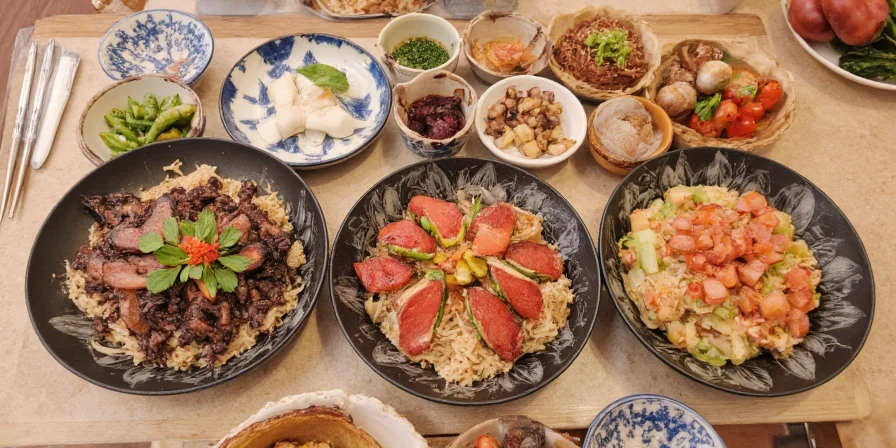Looking for natural umami sources to transform bland dishes? The five most powerful options are: 1) Kombu (kelp) - contains 1.5-2.5g glutamate per 100g, 2) Dried shiitake mushrooms - packed with 10x more guanylate than fresh varieties, 3) Naturally brewed soy sauce - look for "koikuchi" varieties aged 6+ months, 4) Aged Parmesan cheese - 1.2g glutamate per 100g, and 5) Anchovies - just 1-2 fillets melt completely into sauces for pure umami without fishiness. Here's exactly how to use each for restaurant-quality depth in home cooking.

Why Natural Umami Beats Artificial Flavor Enhancers
Unlike MSG or artificial additives, natural umami sources provide complex flavor compounds alongside nutritional benefits. Kombu delivers iodine and minerals, shiitakes offer immune-boosting properties, and aged cheeses provide calcium. The science is clear: natural umami compounds like glutamate and guanylate work synergistically to create 8-10x more savory perception than single compounds alone.
Top 5 Natural Umami Sources: Detailed Breakdown
- Kombu (Kelp): The undisputed champion with 1.5-2.5g glutamate per 100g. For maximum extraction: add a 4" x 6" piece to 4 cups water, bring to 175°F (80°C), then remove before boiling. Never boil kombu - it releases bitter compounds. Use this dashi as soup base or to braise vegetables.
- Dried Shiitake Mushrooms: Contain 10x more guanylate than fresh. Soak 2 dried mushrooms in 2 cups warm water for 20 minutes (don't discard - use the broth!). Powder leftover stems for instant umami boost - just 1/2 tsp per quart of liquid transforms soups.
- Naturally Brewed Soy Sauce: Look for "koikuchi" on label and brewing time (6+ months = deeper flavor). Check ingredients: only soybeans, wheat, salt, water. Avoid hydrolyzed vegetable protein. Tamari works for gluten-free needs but has 15% less umami.
- Aged Parmesan (24+ months): Contains 1.2g glutamate per 100g. Freeze rinds and add to soups (1 rind per 4 cups liquid). For finishing dishes, use microplane for ultra-fine texture that melts instantly.
- Anchovies: 1-2 fillets dissolved in olive oil creates foundational flavor. They disappear completely in tomato sauces, bean dishes, and dressings. For vegetarian option, substitute with 1/4 cup tomato paste caramelized for 8 minutes.

Precision Techniques for Maximum Umami Extraction
- Temperature Matters: Glutamate extraction peaks at 175°F (80°C). Higher temperatures release bitter compounds from kombu and shiitakes.
- Acid Balance Formula: For every 1 tsp umami booster, add 1/2 tsp acid (lemon juice or vinegar) to prevent one-dimensional savoriness.
- Layering Sequence: Build umami in this order: 1) foundation (kombu/dashi), 2) middle (soy sauce/tomato paste), 3) finisher (Parmesan).
- Cooking Time Guidelines: Add kombu/shiitake early in braising, soy sauce in middle phase, delicate ingredients like miso in final 5 minutes.
- Vegetarian Conversion Chart: 1 anchovy fillet = 1/2 tsp mushroom powder + 1/4 tsp tomato paste caramelized for 8 minutes.

Optimal Umami Combinations for Specific Dishes
| Dish Type | Best Umami Combo | Exact Measurements |
|---|---|---|
| Tomato Sauce | Kombu + Parmesan rind | 2" kombu piece + 1 rind per 28oz can tomatoes |
| Miso Soup | Dried shiitake + kombu | 1 dried shiitake + 3" kombu per 4 cups dashi |
| Bean Stews | Anchovies + tomato paste | 2 fillets + 2 tbsp paste per 4 cups liquid |
| Risotto | Shiitake powder + Parmesan | 1 tsp powder + 2 tbsp cheese per cup rice |
| Vegan Gravy | Mushroom powder + soy sauce | 1 tbsp powder + 1 tbsp soy sauce per cup liquid |

Science-Backed Umami Thresholds You Need to Know
Research shows umami perception follows a Goldilocks principle:
- Below 0.1% glutamate concentration: barely noticeable
- 0.1-0.5%: ideal savory balance (1/2 tsp dried mushroom powder per quart)
- Above 0.5%: one-dimensional overload that masks other flavors
This explains why "more umami" isn't always better. For reference, a perfectly balanced miso soup contains approximately 0.35% glutamate.
Visual Flavor Intensity Comparison
Not sure which umami source matches your dish needs? This chart shows relative strength:



Avoid These 3 Common Umami Mistakes
Even experienced cooks make these errors:
- Over-boiling kombu - releases bitter mannitol compounds. Remove at 175°F (80°C).
- Mixing incompatible acids - balsamic vinegar overwhelms delicate umami. Use rice vinegar with Asian ingredients, lemon with Mediterranean.
- Adding all umami at once - layer for complexity. Foundation (kombu) → middle (soy) → finisher (Parmesan).
Frequently Asked Questions
How can I identify authentic fermented soy sauce versus chemically produced versions?
Check the ingredient list: Authentic fermented soy sauce contains only soybeans, wheat, salt, and water. Avoid products listing hydrolyzed vegetable protein or caramel color as primary ingredients. Look for brewing time indicators like "naturally aged for 6 months" on the label.
What's the most effective umami booster for vegetarian dishes?
Dried shiitake mushrooms provide the highest concentration of natural guanylate among plant-based options. Soak two dried mushrooms in 2 cups of warm water for 20 minutes, then use the resulting broth as a base for soups or sauces. This delivers 10x more umami than fresh mushrooms.
Can I overuse umami ingredients and create unbalanced flavors?
Yes. Excessive umami creates a one-dimensional savory overload that masks other flavors. The critical threshold is 0.5% glutamate concentration per dish. For practical cooking: never add more than 1 teaspoon of dried mushroom powder per quart of liquid, or 1 Parmesan rind per 4 cups of soup.
Do umami compounds survive high-heat cooking methods like grilling?
Glutamate remains stable up to 356°F (180°C). However, the Maillard reaction during high-heat cooking creates new umami compounds through protein breakdown. For optimal results, add kombu or anchovies early in braising, but introduce delicate ingredients like miso in the final cooking stage.











 浙公网安备
33010002000092号
浙公网安备
33010002000092号 浙B2-20120091-4
浙B2-20120091-4